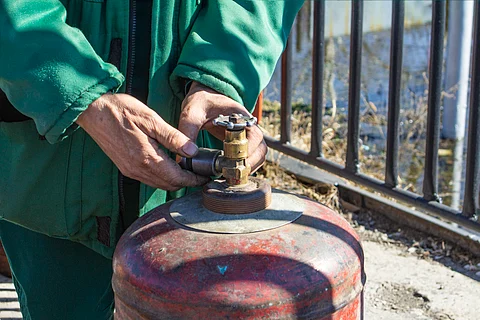

A new roadmap to expand access to clean cooking solutions across Africa by increasing availability of liquefied petroleum gas (LPG) has been launched by the World Liquid Gas Association (WLGA).
The WLGA is the authoritative global voice for LPG and promotes it worldwide to foster a safer, cleaner and more prosperous world.
The LPG Roadmap for Africa includes three calls to action for the public and private sectors to achieve full access to clean cooking in sub-Saharan Africa by 2030.
The three calls of action include — 1) establishing clear, enforceable regulatory frameworks to scale the LPG market in the region; 2) implementing a consumer financing and payment plan to overcome economic barriers; and 3) investing in infrastructure and roads to improve storage, distribution and delivery networks in more remote areas.
These calls of action can make substantial progress towards providing clean cooking solutions, improving public health, and fostering economic development, according to the launched roadmap.
Today, nearly 2.5 billion people (one-third of the global population) live without access to clean cooking solutions, including over 900 million people in Africa.
Traditional solid fuels contribute to deforestation, climate change, and severe health issues due to household air pollution.
The International Energy Agency (IEA) and the WLGA have identified LPG as a key solution to this crisis.
The IEA held its inaugural Summit on Clean Cooking in Africa on 14th May 2024 to raise investment and awareness around the ongoing health and environmental crisis of polluting fuels in home cooking in Africa.
The Summit highlighted a number of innovative technologies and alternatives for clean cooking fuels, including electric cooking and small-scale biofuel production, but LPG continued to outshine alternatives in its affordability and reliability.
As part of its commitment to facilitating access to clean cooking fuels for all, the WLGA has engaged S&P Global Commodity Insights (SPGCI) to review the clean cooking fuels crisis in Africa, analyse the role of LPG as an abundant and immediate clean cooking fuel and provide recommendations on how to increase access to LPG in sub-Saharan Africa.
The WLGA’s CFLA Task Force has commissioned this study on an LPG Roadmap for Africa to provide guidance to stakeholders on the countries with the highest potential for making significant strides in expanding LPG consumption by 2030.
James Rockall, CEO of WLGA said: “An equitable, fit-for-purpose transition means empowering marginalised communities by reducing global energy poverty and fostering a more inclusive future where everyone has the opportunity to thrive. Access to clean cooking supplies will increase economic opportunities and standards of living, while reducing carbon emissions and environmental impacts”.
“While the roadmap is an important step forward, the Cooking or Life Africa Task Force will work with stakeholders across the public and private sectors to realise these ambitions,” he added.
Rural households can reduce indoor air pollution from particulate matter by 98 per cent by switching from wood-burning stoves to LPG-burning stoves.
Providing access to LPG for just half of the sub-Saharan Africa population would save 260 million to 312 million trees per year or about 400,000 hectares of forestland that would otherwise be used for fuel, an area roughly three times the size of Lagos.
Increasing access to LPG to 25 kg/year per capita would reduce black carbon emissions by 130,000 tons of black carbon in 2030, which is equivalent to 117 million tons of CO2 each year.
Each household in Africa that switches from firewood to LPG as a cooking fuel would avert 490 kg of CO2 per year.
The first steps to prioritising regulatory foundations are to build, strengthen and expand new and existing partnerships between African government representatives and market players and industry associations.
Among the regulations to promote and support, the Cylinder Recirculation Model (CRM) should be at the forefront of the regulation conversation.
A range of fiscal policies have been implemented to promote the adoption of LPG as a cleaner and safer alternative to traditional cooking fuels in Africa and globally.
The Angolan government controls fuel prices (gasoline, diesel, LPG) and retail fuel prices are among the lowest in sub-Saharan Africa because of subsidies.
Foreign investment will be required to fund the large-scale infrastructure investments needed to bring LPG to large African populations.